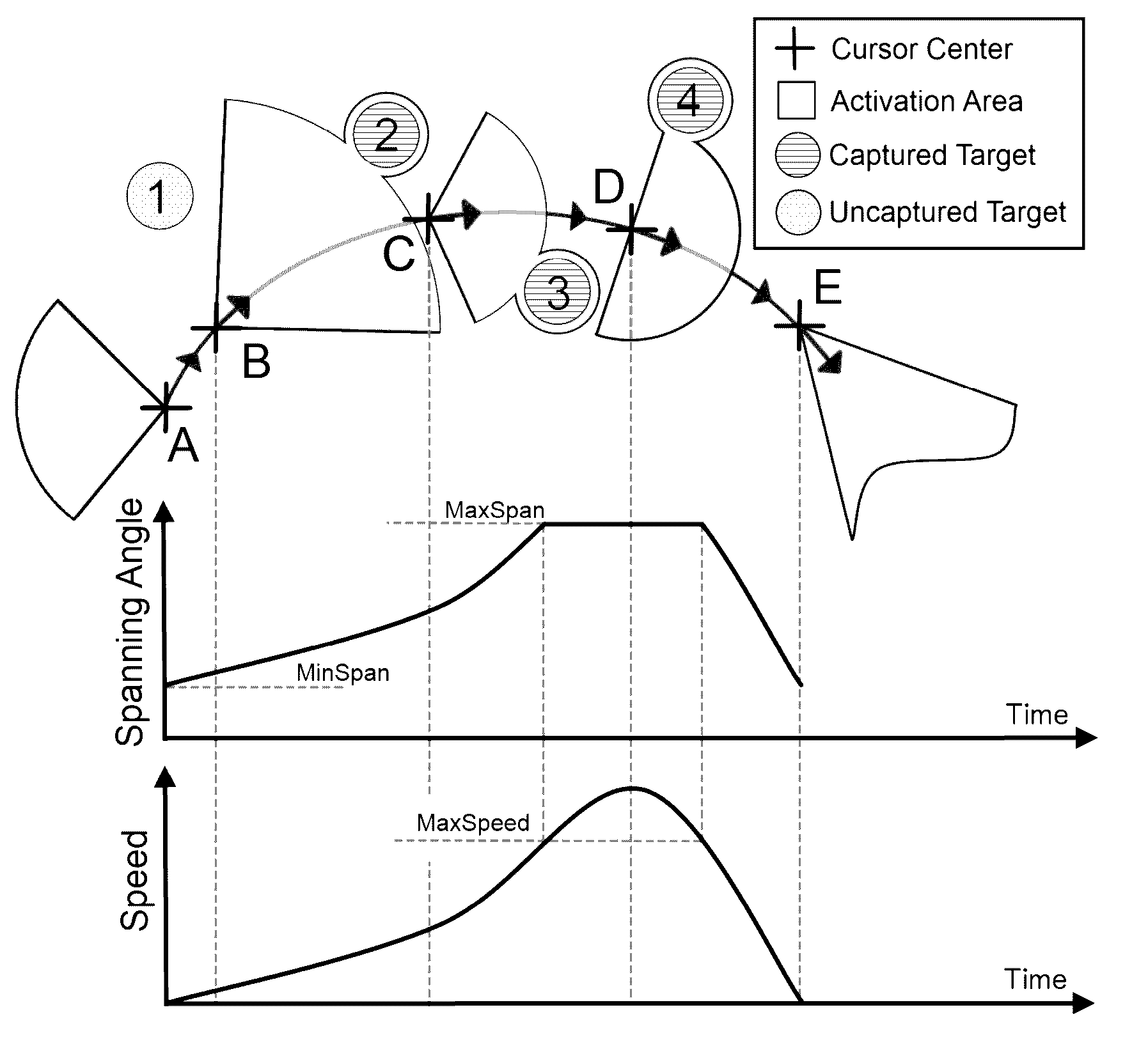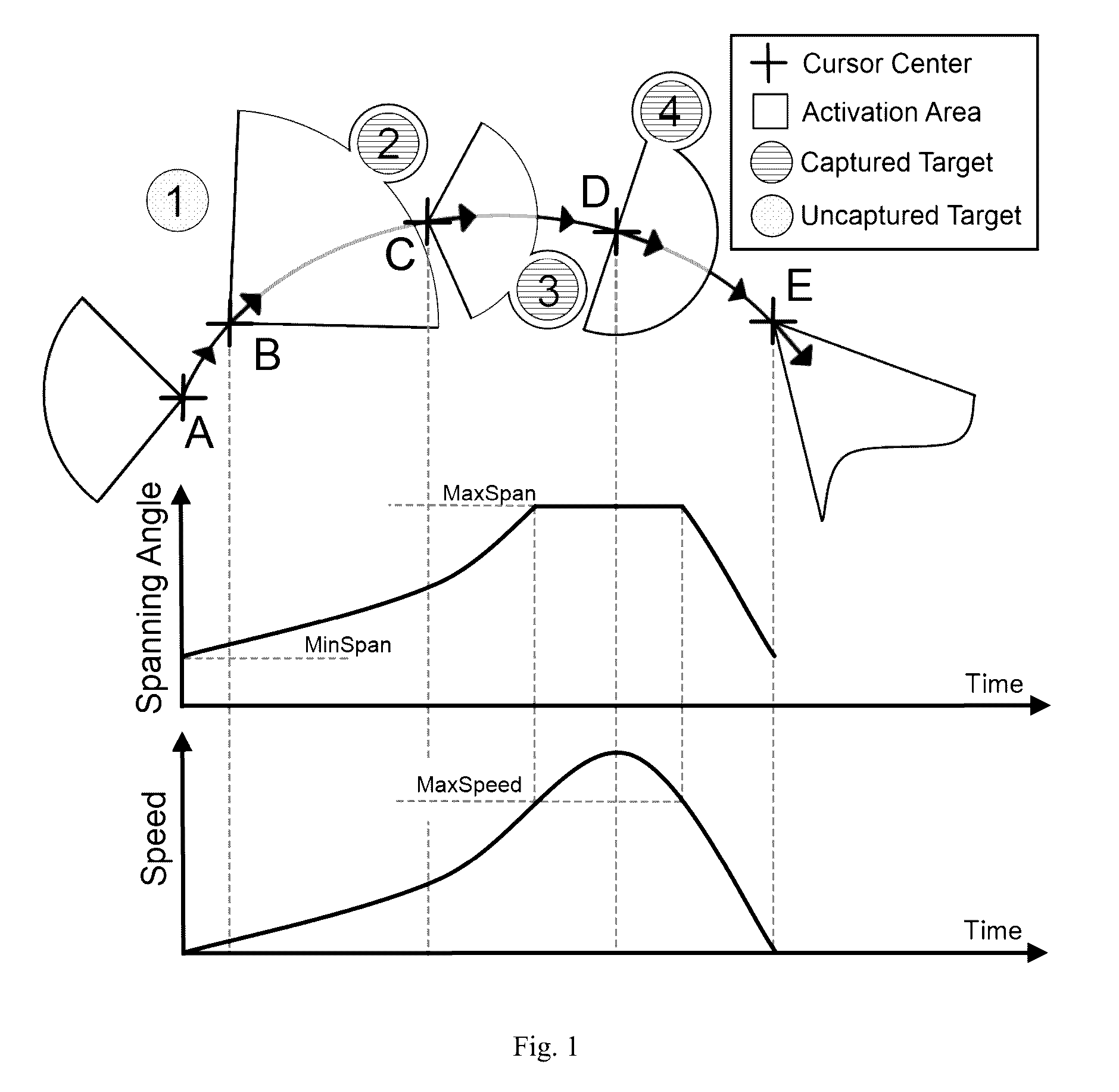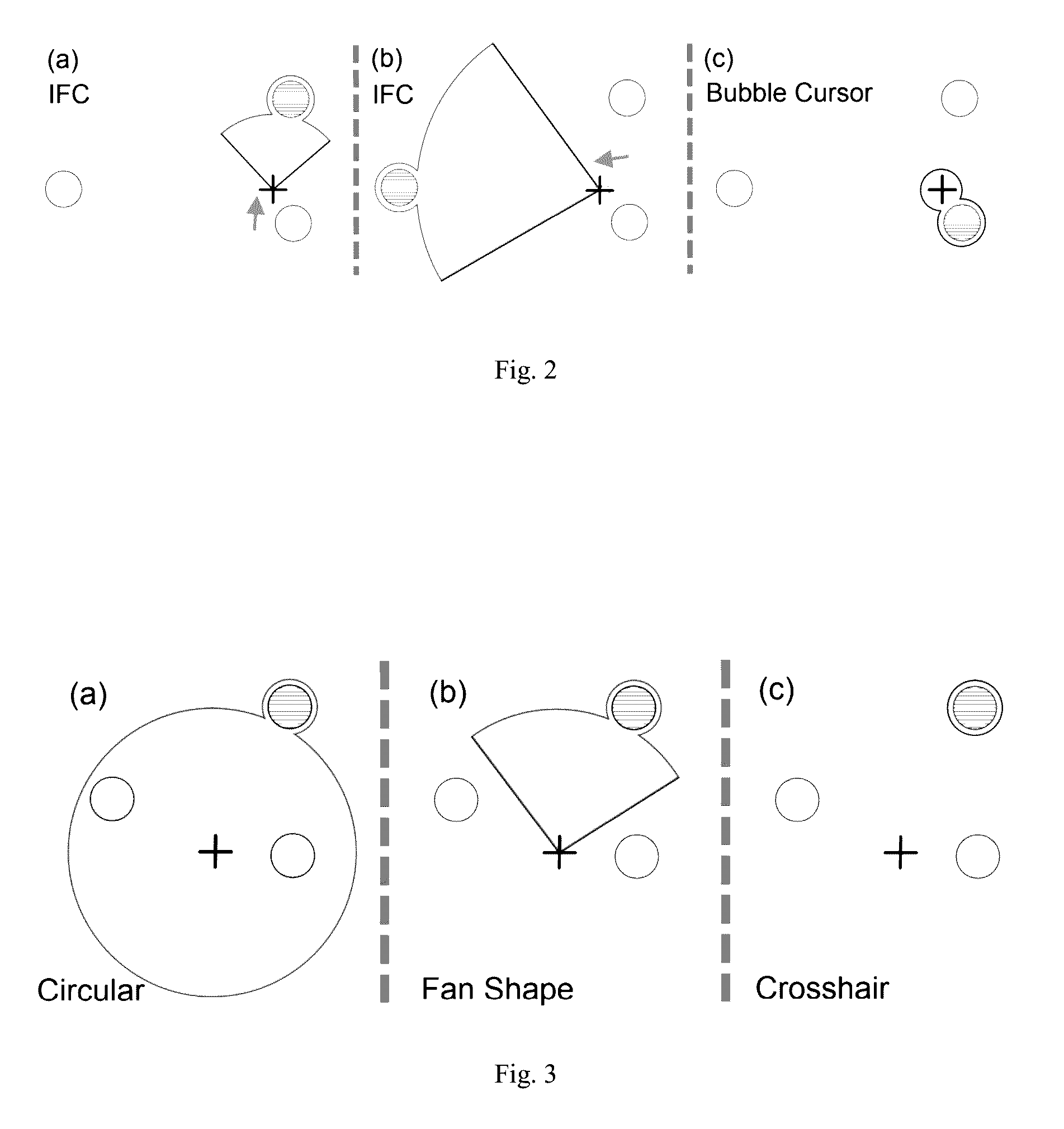Target pointing system for use in graphical user interface
a pointing system and graphical user interface technology, applied in the field of pointing system for graphical user interface, can solve the problems of affecting work productivity, affecting the productivity of users, and becoming more difficult for users to acquire such interface elements over a large display screen with the traditional point cursor, so as to achieve a less-moving cursor and a longer range
- Summary
- Abstract
- Description
- Claims
- Application Information
AI Technical Summary
Benefits of technology
Problems solved by technology
Method used
Image
Examples
experiment 1
le
[0086]Before comparing the pointing system of the present invention and with other pointing system, a preliminary study was conducted to evaluate how different spanning angles affect the performance of the proposed fan cursor technique.
Apparatus
[0087]This experiment was conducted on a PC with a Pentium Dual-Core 3.4 GHz CPU, a 24″ display screen of resolution 1920×1080 and an ordinary optical mouse. It was installed with Windows 7 and the default mouse configuration. The test program was written in C#.
Participants
[0088]6 participants (4 males and 2 female) of age 24 to 27 were recruited. All participants were experienced computer users and they were right-handed.
Procedure and Design
[0089]Sixteen circular candidate targets of 32 pixels in diameter were evenly distributed on a circle of 300 pixels in diameter centered at the screen center, as shown in FIG. 4. At the start of each pointing task, a pair of opposite start and end targets drawn in lighter color and darker, respectively,...
experiment 2
e
[0094]Another preliminary study was conducted to evaluate how different display styles (i.e., how the cursor is visualized) would affect the performance of the proposed fan cursor technique. In the display styles tested, the underlying (implicit or invisible) activation area of the cursor was always in fan shape, using the same spanning angle configuration of (90, 180); only how the cursor visualized on the screen was changed.
Apparatus and Participants
[0095]Same as in Experiment 1.
Procedure and Design
[0096]The same pointing task as described in Experiment 1 was used. Each participant was required to perform fifty pointing tasks in each of the three display styles: fan-shape, circular and implicit style. Before starting the experiment, each participant was given a single 5-minute warm-up session to get familiar with the interface. A total of 750 pointing tasks were performed in this experiment, with each participant performing a total of 150 tasks.
Results and Discussion
[0097]
TABLE 2...
experiment 3 (
Main Experiment): Performance Comparison
[0099]After determining the spanning angles and the display style, a main experiment was conducted to quantitatively evaluate the performance of the IFC. Comparison was made with the point cursor which served as a baseline, the Dynaspot (with 32-pixel spot-width) and the Bubble cursor, which are two of the most popular area cursors.
Apparatus
[0100]Same as those in preliminary studies 1 and 2.
Participants
[0101]Sixteen adult participants (8 males, 8 females) of age 23 to 28 were recruited. All participants are experienced computer users and happened to be right-handed.
Task and Procedure
[0102]The same general procedure as the one used by [9] was followed in testing the Bubble cursor—participants needed to select a goal target drawn in green color, which was surrounded by two groups of distracters, as shown in FIG. 5. As in the preliminary study, when a target is captured by the cursor, it changes to red color. Two groups of distracter targets were...
PUM
 Login to view more
Login to view more Abstract
Description
Claims
Application Information
 Login to view more
Login to view more - R&D Engineer
- R&D Manager
- IP Professional
- Industry Leading Data Capabilities
- Powerful AI technology
- Patent DNA Extraction
Browse by: Latest US Patents, China's latest patents, Technical Efficacy Thesaurus, Application Domain, Technology Topic.
© 2024 PatSnap. All rights reserved.Legal|Privacy policy|Modern Slavery Act Transparency Statement|Sitemap



